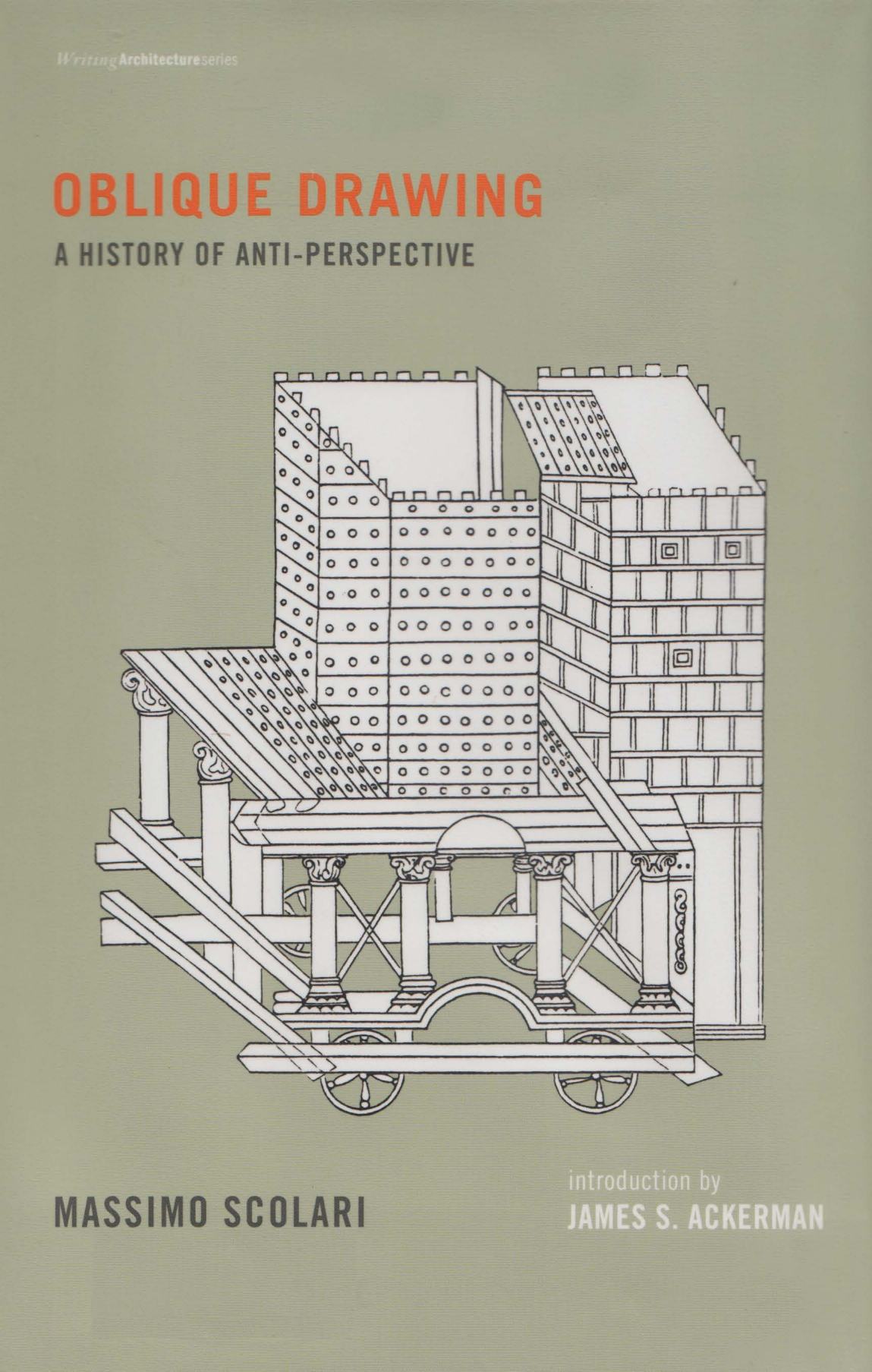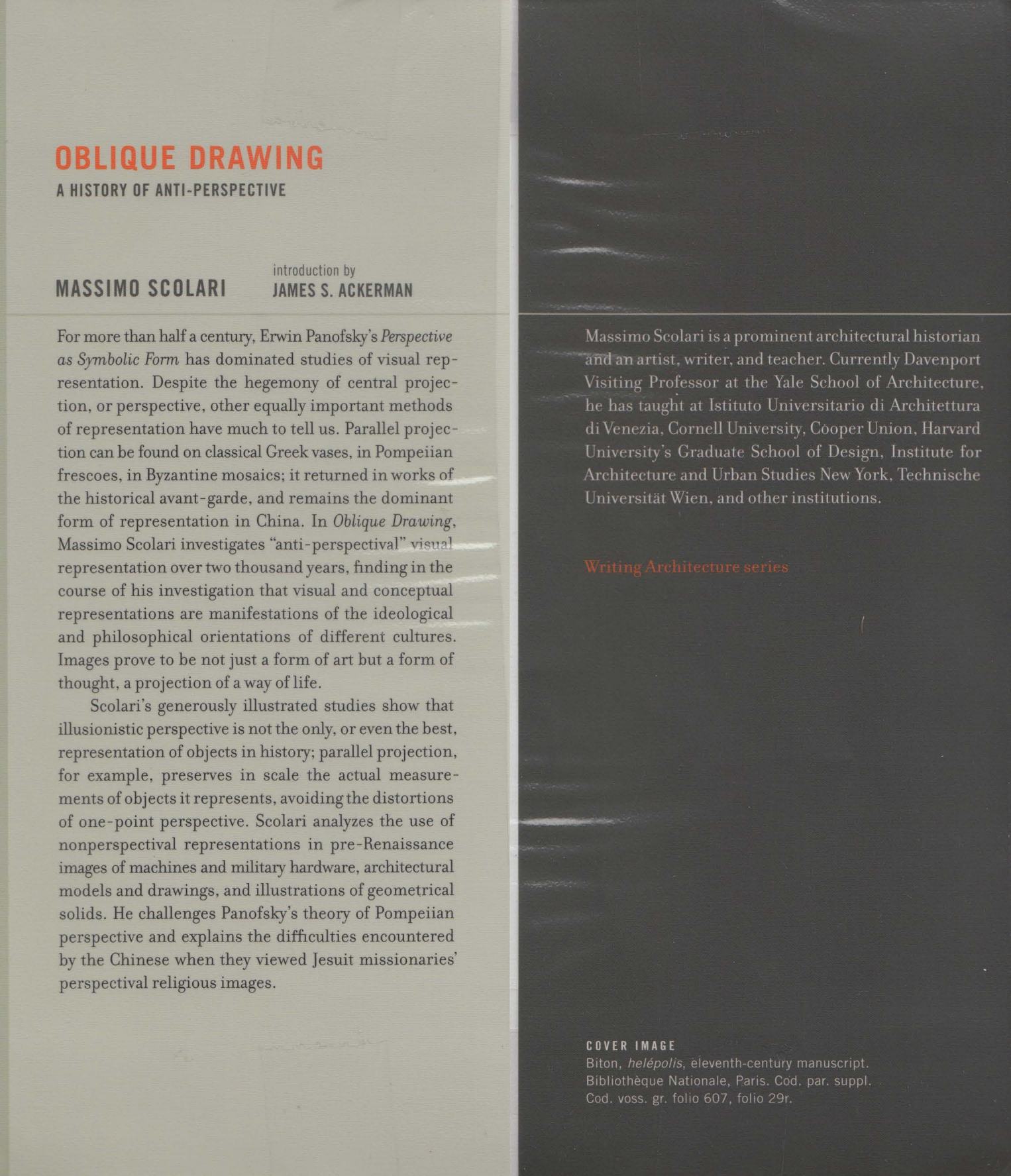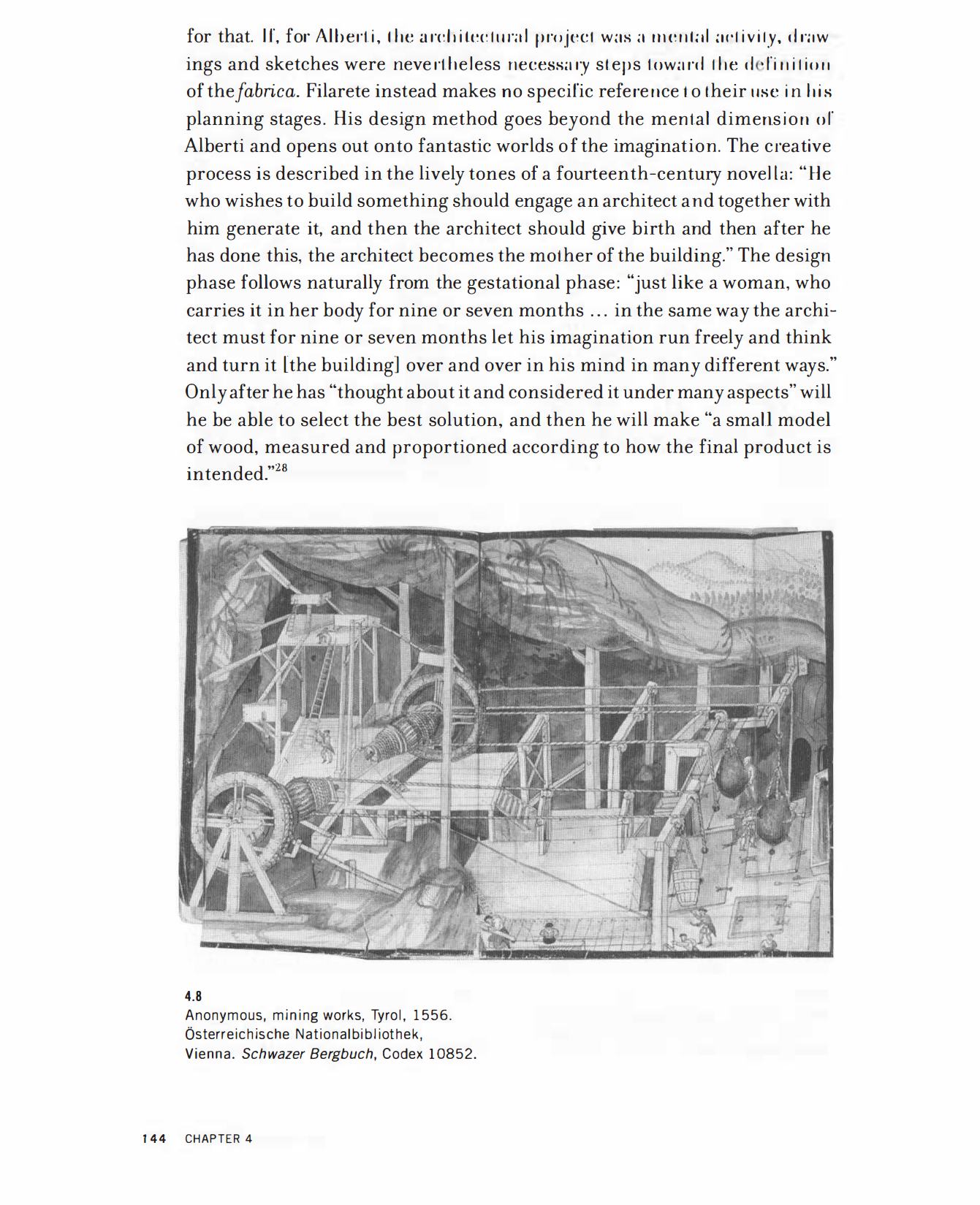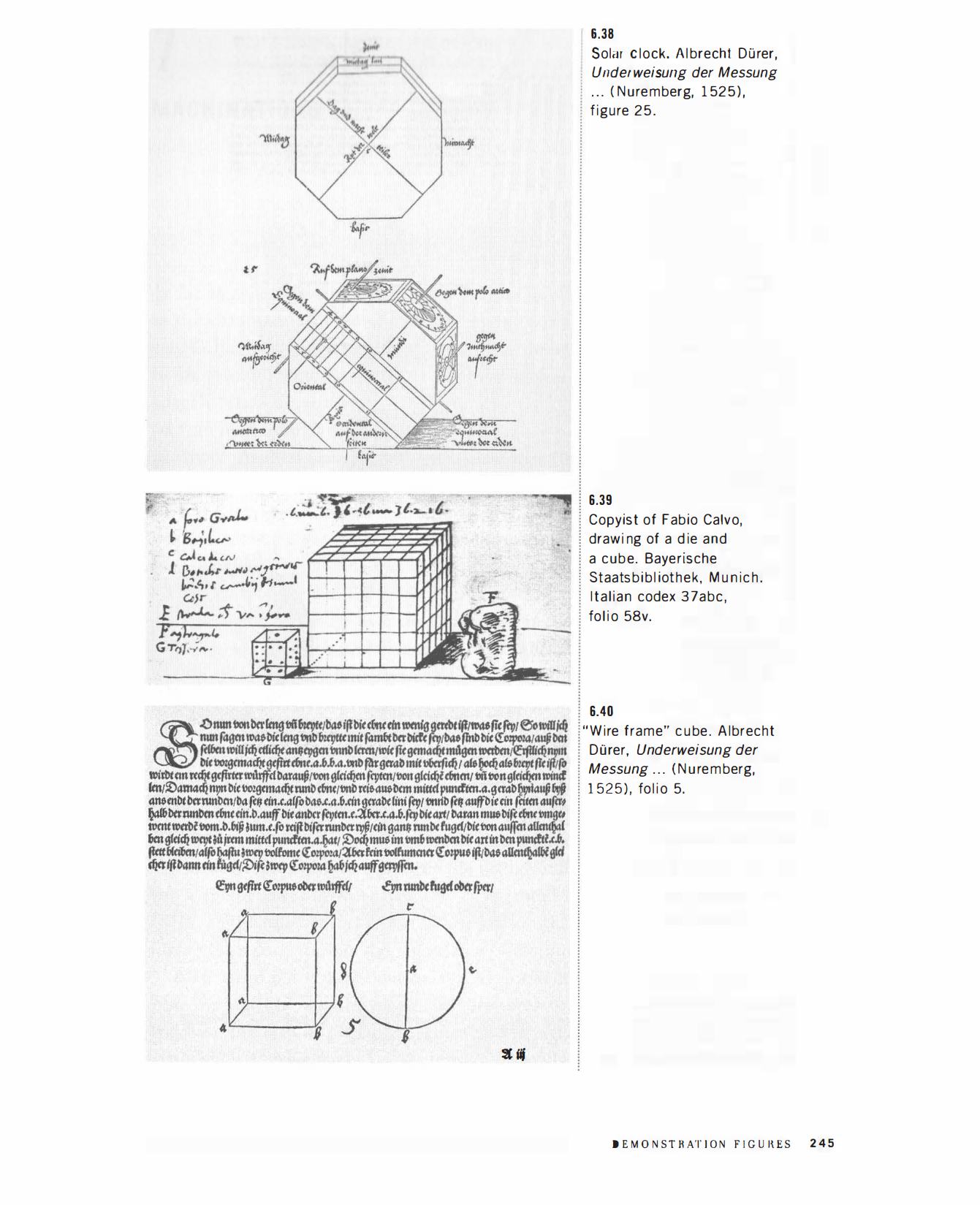|
|
Massimo Scolari. Oblique Drawing: A History of Anti-Perspective. — Cambridge ; London, 2012  Oblique Drawing: A History of Anti-Perspective / Massimo Scolari ; Introduction by James S. Ackerman. — Cambridge, Massachusetts ; London, England : The MIT Press, 2012. — XIII, [1], 389 p. : ill.
For more than half a century, Erwin Panofsky’s Perspective as Symbolic Form has dominated studies of visual representation. Despite the hegemony of central projection, or perspective, other equally important methods of representation have much to tell us. Parallel projection can be found on classical Greek vases, in Pompeiian frescoes, in Byzantine mosaics; it returned in works of the historical avant-garde, and remains the dominant form of representation in China. In Oblique Drawing, Massimo Scolari investigates “anti-perspectival” visual representation over two thousand years, finding in the course of his investigation that visual and conceptual representations are manifestations of the ideological and philosophical orientations of different cultures. Images prove to be not just a form of art but a form of thought, a projection of a way of life.
Scolari's generously illustrated studies show that illusionistic perspective is not the only, or even the best, representation of objects in history; parallel projection, for example, preserves in scale the actual measurements of objects it represents, avoiding the distortions of one-point perspective. Scolari analyzes the use of nonperspectival representations in pre-Renaissance images of machines and military hardware, architectural models and drawings, and illustrations of geometrical solids. He challenges Panofsky’s theory of Pompeiian perspective and explains the difficulties encountered by the Chinese when they viewed Jesuit missionaries’ perspectival religious images.
Massimo Scolari is a prominent architectural historian and an artist, writer, and teacher. Currently Davenport Visiting Professor at the Yale School of Architecture, he has taught at Istituto Universitario di Architettura di Venezia, Cornell University, Cooper Union, Harvard University's Graduate School of Design, Institute for Architecture and Urban Studies New York, Technische Universitat Wien, and other institutions.
Writing Architecture series
CONTENTS
INTRODUCTION BY JAMES S. ACKERMAN vii
1 ELEMENTS FOR A HISTORY OF AXONOMETRY 1
2 SPATIAL ILLUSIONISM IN POMPEIAN WALL PAINTINGS 25
3 OBLIQUE DRAWING 47
4 THE IDEA OF MODEL 137
5 BRUNELLESCHI'S MODEL FOR THE DOME OF SANTA MARIA DEL FIORE AND THE GHERARDI DRAWING 185
6 DEMONSTRATION FIGURES 215
7 MACHINATIONS 247
8 SOLDIERLY PERSPECTIVE 287
9 DRAWING IN PARALLELI MODO 325
10 THE JESUIT PERSPECTIVE IN CHINA 341
11 THE TOWER OF BABEL: FORM AND REPRESENTATION 359
INDEX 375
Sample pages 
Download link (pdf; yandexdisk; 41.6 MB)
The electronic version of this edition is published only for scientific, educational or cultural purposes under the terms of fair use. Any commercial use is prohibited. If you have any claims about copyright, please send a letter to 42@tehne.com.
12 марта 2024, 15:19
0 комментариев
|
Партнёры
|






Комментарии
Добавить комментарий